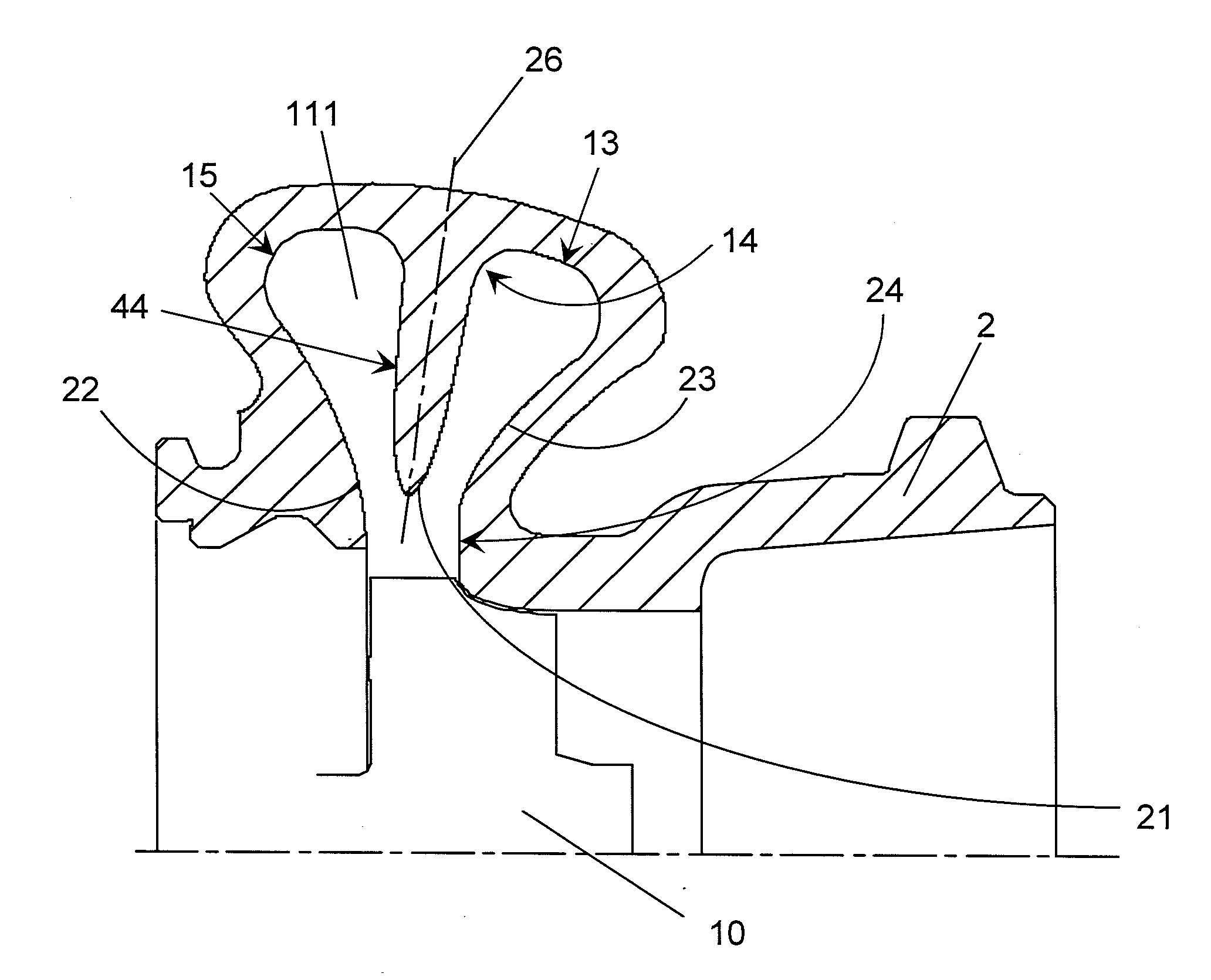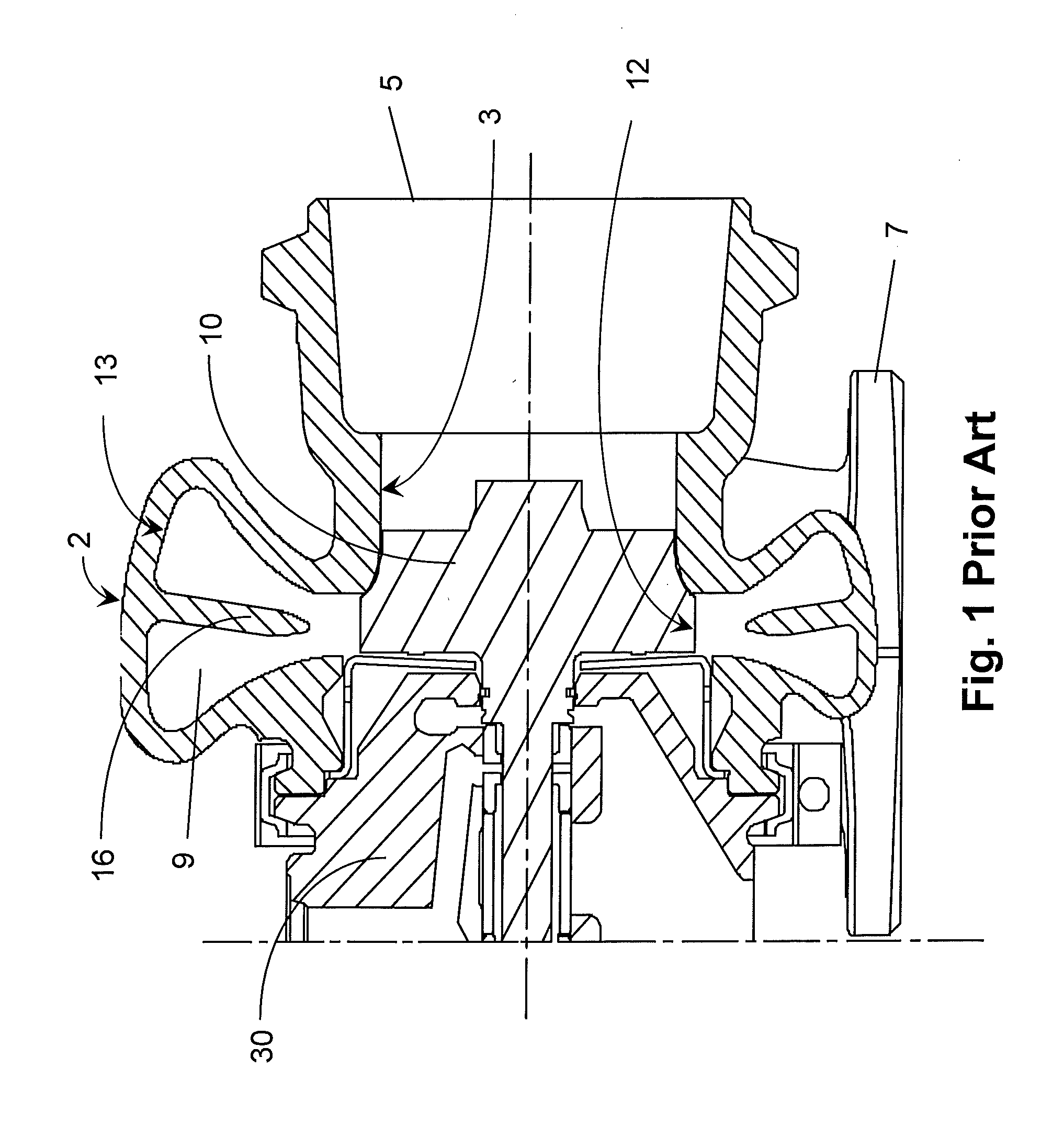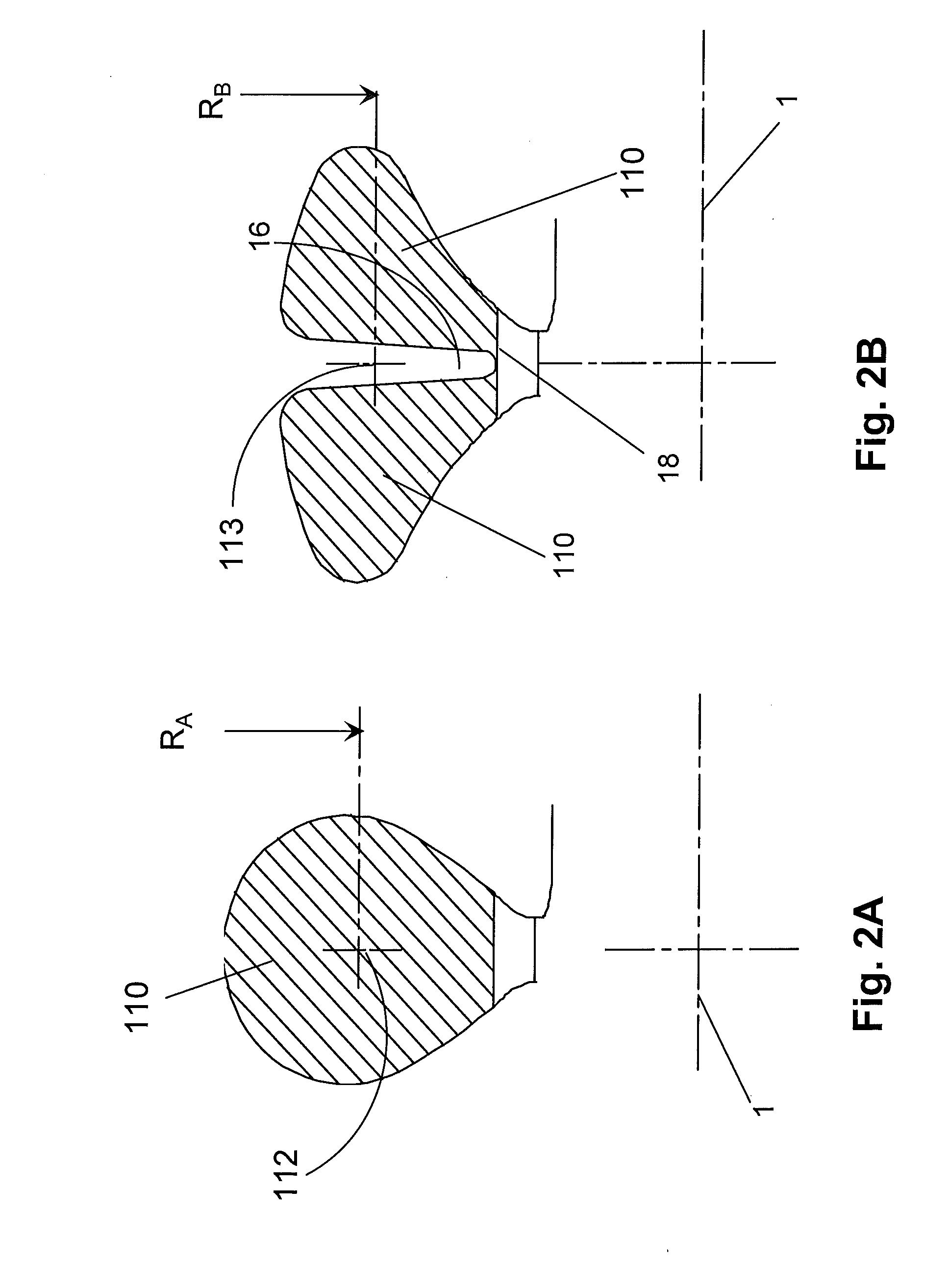Flow thermal stress turbocharger turbine housing divider wall
a technology of thermal stress and turbocharger, which is applied in the direction of machines/engines, stators, liquid fuel engines, etc., can solve the problems of inaccuracy of cast parts, inability to accurately reproduce cast parts, and easy cracking of the area, so as to improve the durability of the divider wall and resist the propensity for cracking
- Summary
- Abstract
- Description
- Claims
- Application Information
AI Technical Summary
Benefits of technology
Problems solved by technology
Method used
Image
Examples
Embodiment Construction
[0037]Divided turbine housings in turbochargers are used to sustain, in the turbine, the pulse energy originating from low engine speed combustion in the cylinder head. The exhaust pulses are propagated along the exhaust manifold, and upon reaching the turbine the divided turbine housing further maintains the pulses to deliver pulsed flow, as against steady state flow, to the turbine wheel. This pulse energy is then converted to rotational energy by the turbine wheel.
[0038]In an aerodynamic sense, the shape of the divider wall near the trailing edge (21) and the shape of the surface of the outer walls (22, 23) of the volute form a nozzle to guide the exhaust flow into the turbine wheel (10). As a result of this aerodynamic need, the design of the divider wall, the function of which is to segregate the pulses in the separate volutes (111) and to support the trailing edge (21) surfaces, has historically been left in the hands of the aerodynamics designers. The inventors and set about ...
PUM
 Login to View More
Login to View More Abstract
Description
Claims
Application Information
 Login to View More
Login to View More - R&D
- Intellectual Property
- Life Sciences
- Materials
- Tech Scout
- Unparalleled Data Quality
- Higher Quality Content
- 60% Fewer Hallucinations
Browse by: Latest US Patents, China's latest patents, Technical Efficacy Thesaurus, Application Domain, Technology Topic, Popular Technical Reports.
© 2025 PatSnap. All rights reserved.Legal|Privacy policy|Modern Slavery Act Transparency Statement|Sitemap|About US| Contact US: help@patsnap.com



